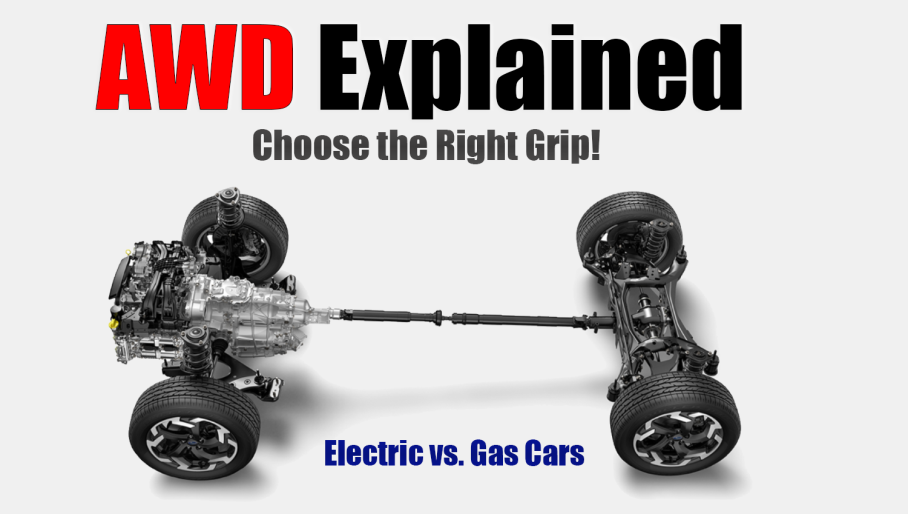All-wheel drive (AWD) is a coveted feature, especially for drivers who navigate challenging weather conditions or venture off-road. Traditionally, AWD has been associated with petrol-powered vehicles, but the rise of electric cars presents a new perspective. So, how does AWD technology differ between electric and petrol cars, and which one reigns supreme?
AWD in Petrol Cars:
In petrol-powered vehicles, AWD typically relies on a complex drivetrain with a transfer case that distributes power...
All-wheel drive (AWD) is a coveted feature, especially for drivers who navigate challenging weather conditions or venture off-road. Traditionally, AWD has been associated with petrol-powered vehicles, but the rise of electric cars presents a new perspective. So, how does AWD technology differ between electric and petrol cars, and which one reigns supreme?
AWD in Petrol Cars:
In petrol-powered vehicles, AWD typically relies on a complex drivetrain with a transfer case that distributes power between the front and rear wheels. This can involve various systems, such as:
- Full-time AWD: Power is constantly distributed between all four wheels, offering superior traction in all conditions.
- Part-time AWD: Power is primarily directed to the front wheels, with the system automatically engaging the rear wheels when needed for improved traction.
- On-demand AWD: Drivers can manually select between AWD and two-wheel drive (2WD) based on driving conditions.
The Advantages of AWD in Petrol Cars:
- Enhanced Traction: AWD provides superior grip on slippery surfaces like snow, ice, and mud, improving handling and safety.
- Off-road Capability: AWD allows petrol cars to venture off-road with greater confidence, tackling uneven terrain and challenging inclines.
- Improved Stability: AWD enhances vehicle stability during high-speed maneuvers and sharp turns.
The Drawbacks of AWD in Petrol Cars:
- Increased Fuel Consumption: AWD systems add complexity and weight to the vehicle, which can lead to decreased fuel efficiency.
- Higher Maintenance Costs: The additional components of AWD systems can translate to higher maintenance costs.
- Potentially Higher Purchase Price: AWD-equipped vehicles often come with a higher initial price tag compared to 2WD options.
AWD in Electric Cars:
Electric vehicles present a unique approach to AWD. Since they lack a traditional drivetrain with a transfer case, they often employ a dual-motor setup. Here's how it works:
- Dual Electric Motors: Each axle (front and rear) has its own electric motor, allowing for independent power distribution to all four wheels.
- Software Control: An advanced computer system controls the power distribution between the front and rear motors, optimizing traction based on driving conditions.
The Advantages of AWD in Electric Cars:
- Instantaneous Torque: Electric motors provide instant torque, which translates to immediate traction control and improved handling in slippery conditions.
- Packaging Efficiency: The dual-motor layout can be more space-efficient than traditional AWD systems in petrol cars.
- Potential Efficiency Gains: In some cases, AWD can improve electric car efficiency by allowing for better regenerative braking.
The Drawbacks of AWD in Electric Cars:
- Range Reduction: AWD systems can contribute to decreased range in electric vehicles due to the additional power consumption of the extra motor.
- Increased Complexity: Dual-motor setups add complexity to the vehicle, potentially impacting maintenance costs.
- Limited Availability: Not all electric vehicles offer AWD as an option, and it might come at a premium price.
So, Which AWD Reigns Supreme?
The answer depends on your specific needs and priorities. Here's a quick breakdown:
- Choose Petrol AWD if: You frequently navigate challenging off-road terrain and prioritize maximum traction in all conditions, even if it means sacrificing some fuel efficiency and incurring potentially higher costs.
- Choose Electric AWD if: You value the benefits of AWD for occasional slippery conditions or improved handling, and prioritize instant torque and potential packaging advantages. However, be prepared for a potential decrease in range and potentially higher costs compared to non-AWD electric cars.
The Future of AWD:
Both electric and petrol AWD technology are continuously evolving. Advancements in battery technology and electric motor efficiency hold promise for increased range and efficiency in electric AWD vehicles. Additionally, both technologies are likely to benefit from further software development and control systems that optimize power distribution and handling.
Ultimately, the choice between electric and petrol AWD comes down to individual needs and priorities. As both technologies continue to develop, the future of AWD promises to be even more exciting and versatile for drivers of all kinds.
Read More

